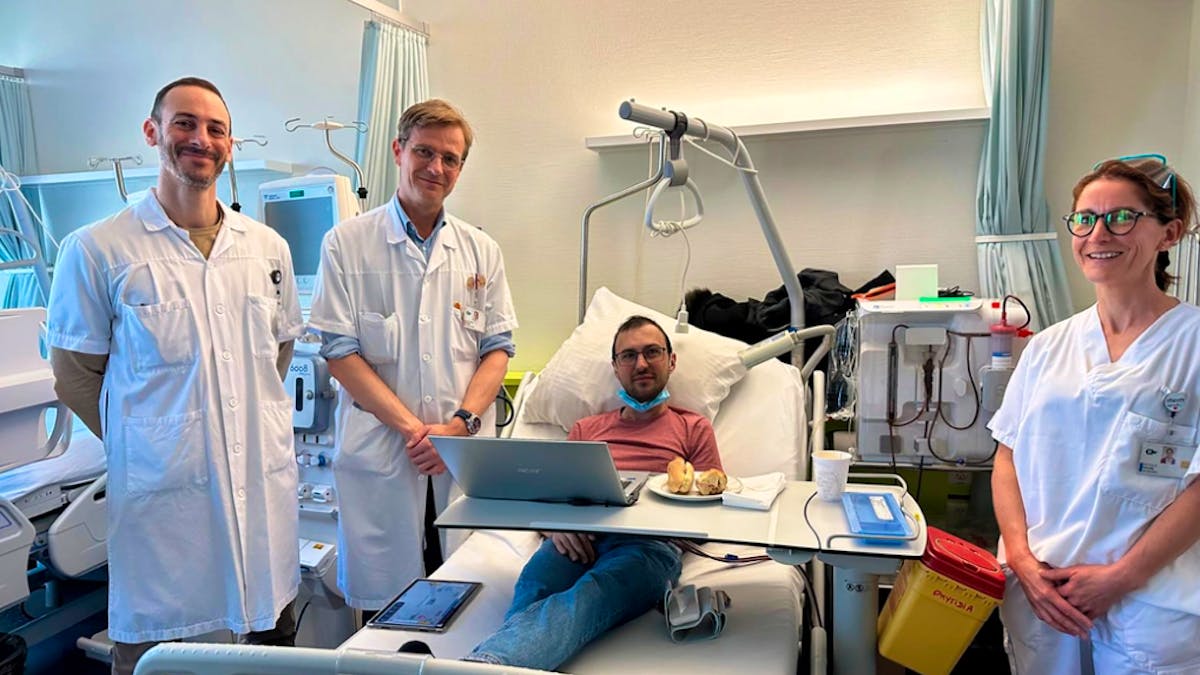The dialysis needs (blood purification) increase each year, in particular due to the progression of chronic diseases such as hypertension or diabetes, the main causes of renal insufficiency. About 4,500 people in Switzerland are dialysis in 2025. The proper functioning of the kidneys is necessary to eliminate body waste and balance mineral salts as well as blood pressure. When a patient reaches an advanced stage of renal failure, dialysis is essential, waiting for a kidney transplant.
Although dialysis makes it possible to make up for the work of the kidneys and to prolong life, it leads to significant constraints and heavy repercussions on the personal and professional levels. The majority of patients concerned must thus go to a dialysis center three half-days per week.
The brake of equipment
In Switzerland, conventional home hemodialysis has been available for several years, but very little practiced: traditional equipment is complex and bulky. Thanks to recent technological advances, more compact machines today facilitate home use. Since the start of the year, this innovative therapeutic option has been available in Switzerland. The CHUV nephrology and hypertension service quickly adopted this solution and trained its first patient to compact and daily hemodialysis at home.
At the CHUV dialysis center, a dedicated nurse team was specifically formed by the equipment supplier. The professionals then accompanied the patient for six weeks, transmitting the skills necessary for autonomous use at home. “By understanding his treatment, by mastering the dialysis instructor and technical gestures such as the connection and disconnection of the catheter, the patient becomes an expert in his care. He monitors his sessions, manages alarms safely and knows that he can contact our team at any time, ”explains Stéphanie Nergoux, nurse in the Nephrology and Hypertension Service of the CHUV.
Sessions from 2 hours 5 to 6 times a week
Unlike conventional hemodialysis (3 4 -hour sessions per week), home hemodialysis allows shorter sessions (around 2 hours) but more frequent (5 to 6 days per week). This pace corresponds more to the natural functioning of the kidneys, with the result of better tolerance for treatment and a significant improvement in quality of life. Professional and social activities, as well as leisure, are facilitated thanks to greater flexibility and limited trips to the hospital.
After a month of use, Roberto, a 34 -year -old patient, is enthusiastic :: “The sessions are going very well. The organization at home is still in progress, but we find our rhythm with my partner. Above all, I feel much less tired than with center dialysis: I was able to resume a 40% professional activity and I return to the gym twice a week ”.
“To be eligible for home hemodialysis, patients must have a stable illness, be able to carry out the necessary technical gestures and show a motivation to engage in this project,” adds Dr Menno Pruijm, head of dialysis in the nephrology and hypertension service of the CHUV, associated professor at the Faculty of Biology and Medicine (UNIL) and chairman of the Swiss Society nephrology.
This first mark a key step towards a more individualized management of patients with renal failure.
What is chronic hemodialysis?
Chronic renal failure is the gradual, prolonged and irreversible decrease in the rein’s functions. Hemodialysis is to purify the blood of patients with kidney failure using a machine. This technique makes it possible to purify the blood of the toxins and the water retained in excess. For this, the blood crosses a dialysis filter and is reinjected into the patient’s body or the patient. Several weekly sessions are necessary. Henceforth, eligible patients can do home hemodialysis on request to nursing teams in the CHUV dialysis center.

